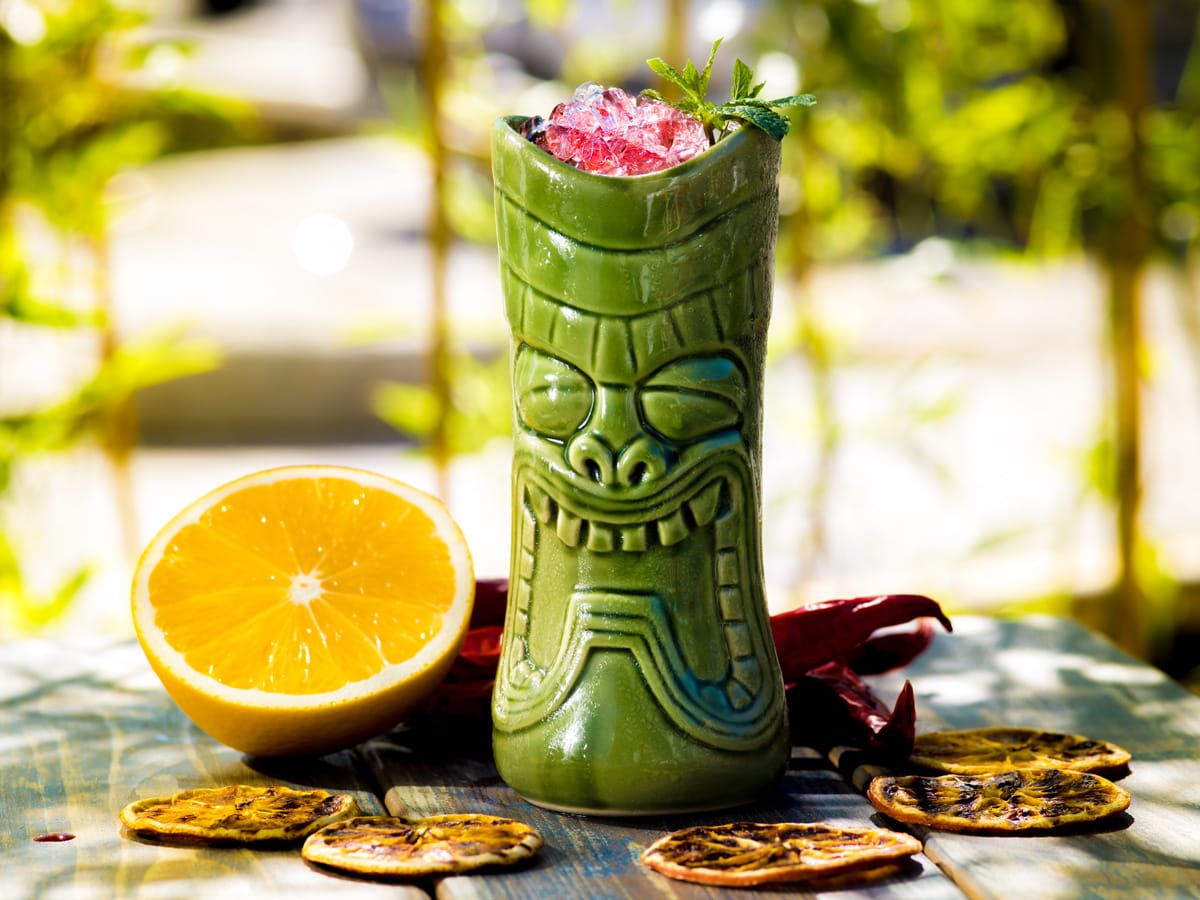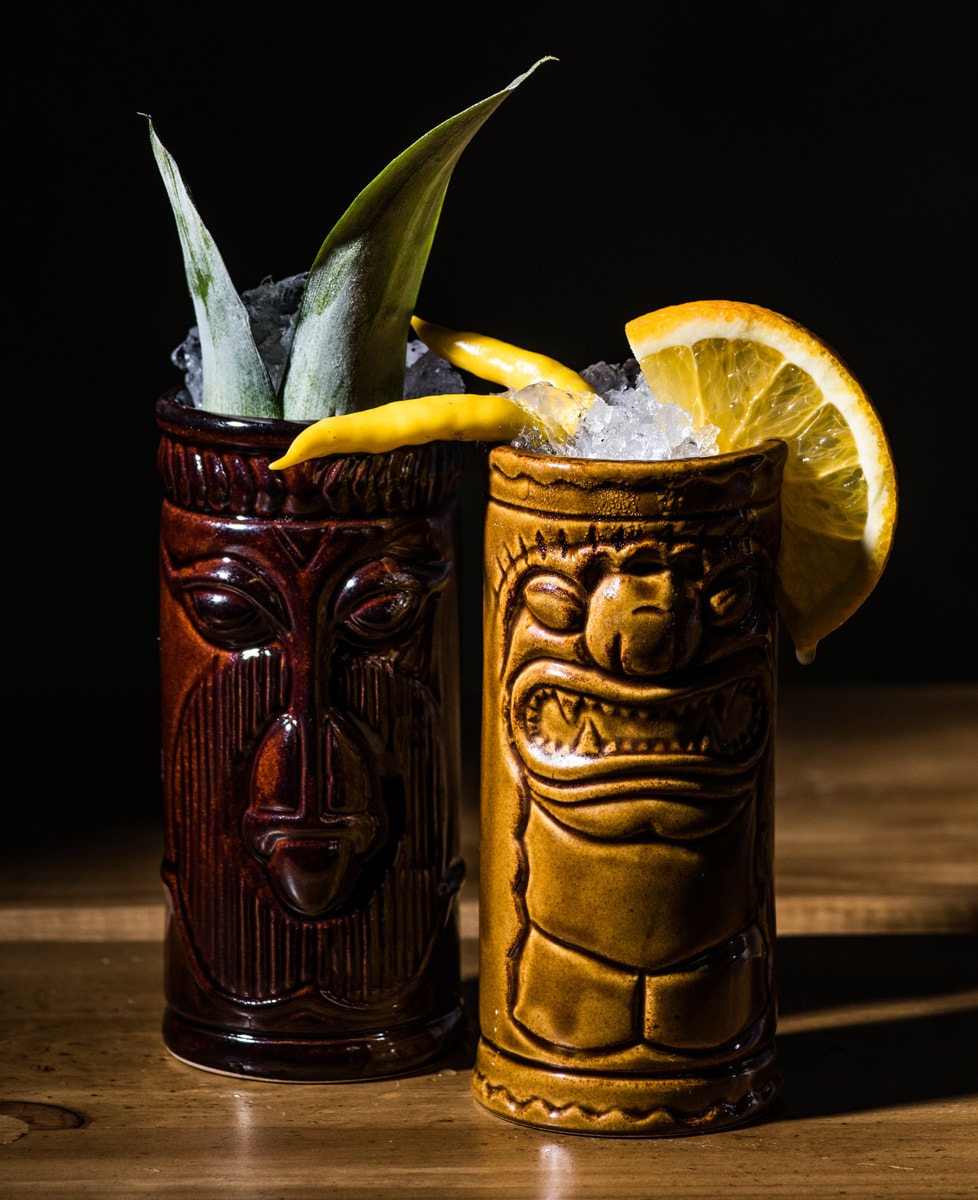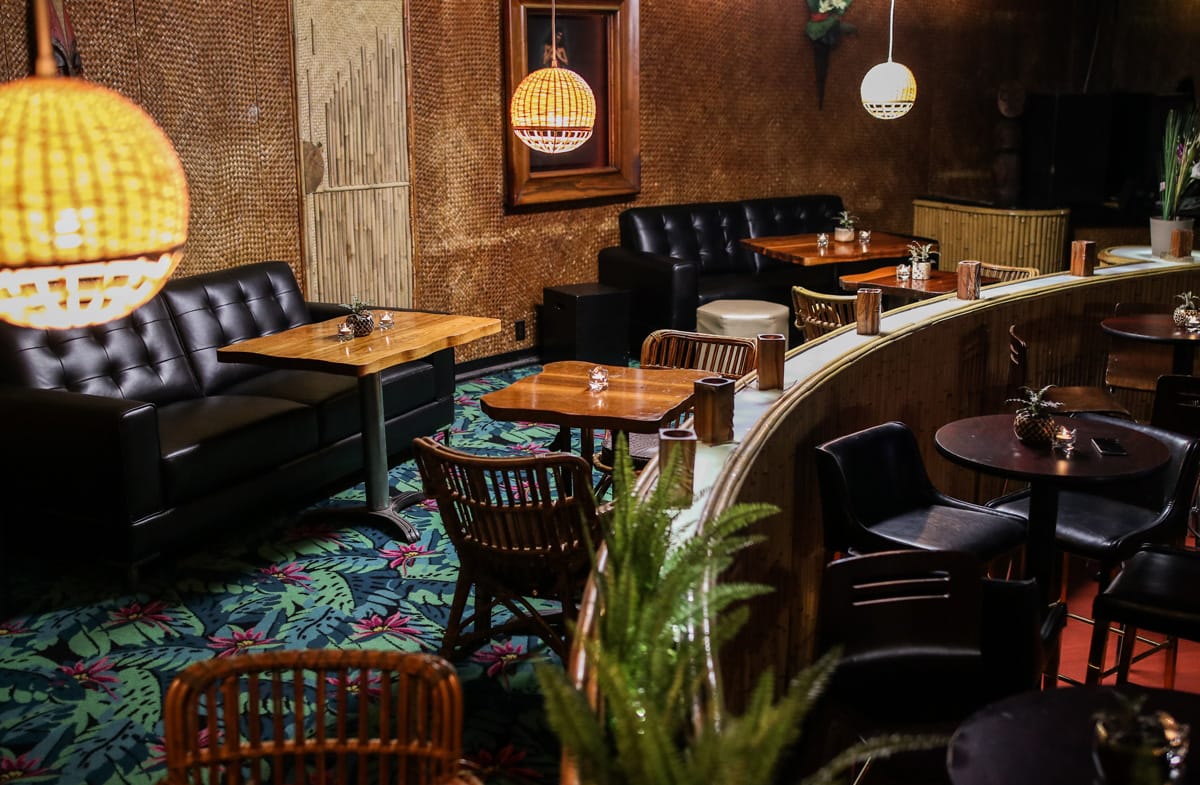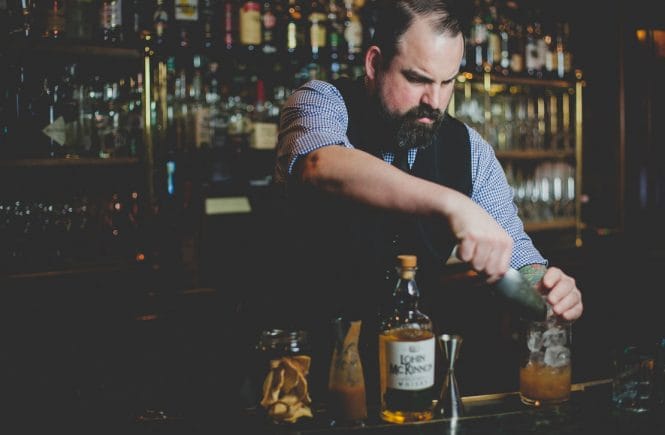Tiki is back in Vancouver. Why did it ever go away?

Tiki culture is a liquid ticket to an imaginary tropical island where the breeze is always warm, the music sways like the branches of a palm tree, and the rum flows as easily as the waves that wash up on a sandy beach.
Tiki originated in California in 1933, but exploded in popularity after the Second World War. It was inspired by the romance of the South Pacific, the culture of Polynesia, the flavours of Asia and the rum punches of the Caribbean, making it the ultimate fusion cocktail experience, served in a kitschy-cool Hollywood-ready vessel to a market that was weary of war and ready to party.
It found a happy home in mid-century Vancouver, where throughout the 1960s, ’70s and even the ’80s, swish sophisticates sipped Mai Tais and Scorpions at The Waldorf Hotel and Trader Vic’s at the Bayshore.

By the late 1980s, though, the winds of liquid fashion had shifted to boldly oaked wines and spirit-forward martinis. By the 1990s, tiki’s flickering flame had largely died out. Trader Vic’s closed in 1996, its Polynesian-longhouse-inspired building hauled away to Vancouver Island, and The Waldorf became for the most part a special-event space.
Bartenders would dream of making boozy bowls of punch and setting things on fire
But as cocktail culture emerged in the 2000s, bartenders would wistfully speak of relighting that bamboo torch. Even as they stirred their bittered bourbon drinks and reverse-spherified gelatinous pearls, they’d dream of making boozy bowls of punch and setting things on fire.
And now they can, because tiki is back in town.
Not in a big way, to be sure. But still, it’s following in the sandaled footsteps of popular American joints like Smuggler’s Cove in San Francisco, Three Dots and a Dash in Chicago and Latitude 29 in New Orleans.

In 2013, the Shameful Tiki Room opened on Vancouver’s Main Street to serve up “mystery bowls” and classic, well-made tiki cocktails in a sultry beach hut ambience. The room is filled with tiki touches ranging from oceanic light fixtures to grimacing mugs to mid-century memorabilia to the paintings that were reportedly smuggled decades ago out of The Waldorf. It is a trip to a faraway place, borne on rum-fueled wings.
Late last summer, Sneeki Tiki opened in the Best Western Plus on Granville Street to serve up big, boozy cocktails such as Hurricanes, Piña Coladas and the epic Skull Punch in a tropical nightclub atmosphere with a live DJ.
Meanwhile, those who love Vancouver history as much as they appreciate a well-made Mai Tai will be thrilled to know that TIKI BAR at The Waldorf is back in business with an injection of life from owners Viaggio Hospitality Group. At first glance, not much has changed: Stars still twinkle in the room’s midnight-blue sky; the fake palm trees still tower over the bar; the exotic Tahitian paintings still adorn the walls; and yes, that is indeed the original cane furniture.
The bar serves a selection of contemporary tiki cocktails and shareable punch bowls as well as the traditional Mai Tais, Zombies, Navy Grogs and other favourites. The punch bowls, which serve groups of six, are a crowd favourite, especially when they’re set ablaze to bursts of applause.
Just one sip of a fruity rum punch under the spreading branches of a fake palm tree, and you’re whisked away to a romantic dream of island life
Just walking past the scowling tiki statue and into the room is like stepping back into a slice of Vancouver history. Rumour has it that the place is haunted; certainly, the ghosts of good times past linger here in the memories of romances, parties and celebrations.
Now word is that H Tasting Lounge is bringing tiki back to The Westin Bayshore, where Trader Vic once plied his Polynesian cocktails. When the new patio opens later this spring, tropical cocktails will be on the menu.
To be sure, tiki is kitsch. It’s culturally dubious. It’s not, perhaps, for every day. But just one sip of a fruity rum punch under the spreading branches of a fake palm tree, and you’re whisked away to a romantic dream of island life. And some days, isn’t that just what we all need?
NAKED POLYNESIAN BEAUTIES: The American Gaugin, they called him. Edgar William Leeteg is considered the father of American velvet painting. Born in St Louis in 1904, he moved to French Polynesia in 1933, and spent the rest of his short life there capturing the local scenery (mainly the scantily clad women).
In 1953, the same year Leeteg died, Vancouver hotelier Bob Mills travelled to Tahiti, where he bought eight somewhat erotic Leeteg paintings for $275 apiece. His wife wouldn’t have them in the house, so he created a Tahitian lounge in his hotel to give them a home.
TIKI BAR at The Waldorf opened in 1955 and the paintings have hung on its walls ever since, although today they are facsimiles as the originals are too valuable to risk being damaged or stolen.
APPROPRIATION OR APPROVAL? Despite its Hollywood-Caribbean-Hawaiian-Chinese pop-cultural mashup, the history of tiki does actually date back to ancient Polynesia. The original stone or wooden tiki carvings were religious in nature and appear throughout the southern Pacific islands; more specifically, in Maori mythology, “Tiki” refers to the first man.
So what’s it doing on a mug of boozy rum punch? Some argue that it’s simply a 20th century American social construct, and because tiki bars don’t feign authenticity, they don’t count as cultural appropriation. Others say tiki is cultural appropriation at its most blatant and suggest replacing the word “tiki” with “tropical.” What do you think? Is it cultural appropriation or homage?
—by Joanne Sasvari




